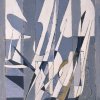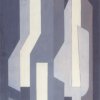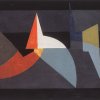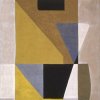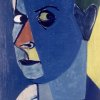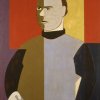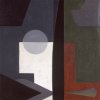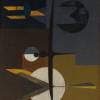In 1952, Louis Van Lint is part of the group Espace, which brings together some of his former colleagues from The Young Belgian Painters and some architects, an association that wants to establish a fruitful dialogue between architects, painters and decorators. This preoccupation to combine painting and architecture, finds an opportunity of expression for Van Lint, and for his friend Mendelson, when they participate in fitting the Canterbury Tavern, opened in Brussels by Albert Niels, one of the ardent collectors of Van Lint's work. No doubt, it was this preoccupation to incorporate painting into architecture that encouraged Van Lint to direct his abstraction toward geometry. As the artist says, "There was no more the question of an easel painting, of small patches of color, but of large flat tints well spread, well constructed, which were going to be incorporated into these buildings." Thus, for the duration of four years, and even in the few portraits that he painted in this period, Van Lint will use determined shapes (to repeat the title of one of his works) and flat tints strictly delimited.

To reveal the composition on a flat surface, to try the monumental equilibrium by net cuts of the form, to use in an absolute manner the flat tint, sometimes outlining it, to balance the color tones in a classical rhythm and in a climate of contained serenity, are then the intentions of the artist.

However, by the end of 1956, Van Lint pulls himself together again, realizing in this geometric orientation the danger of a straitjacket for the expression of his sensitivity, and allows himself to be influences again by the promptings of life and nature as inspirations for his new abstractions.



